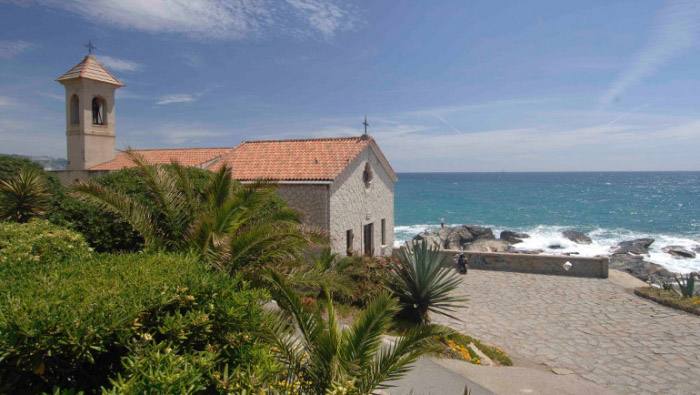The South of Liguria
For centuries, fascinating exotic plants have adorned Bordighera and its valleys, becoming an integral part of the landscape, plants of ancient origin that embellish the sunny gardens of the city.
The climate, the light, the colours, and the appearance of the houses in Bordighera Alta resemble those of the villages overlooking the Mediterranean basin. A few steps uphill lead us into the Vallone di Sasso: olive trees, palm trees, and aromatic plants accompany those who stroll along the quiet path. An area rich in art and history captures one’s attention: in 1884, near a centuries-old olive tree, Monet painted “The Farm at Bordighera” here.
As a complement to this ridge colonized by palm trees, some hillside hamlets dominate the slopes: Sasso, Vallebona, San Biagio della Cima, and others (higher up, Seborga) are perfectly nestled along the hill. They all offer well-preserved historic centres to visit, and the residents here are engaged in agriculture.
Excursions conclude with a return to the valley. Bordighera encompasses not only the hilly, walled part: the tourist resort of the Riviera dei Fiori is beloved for its villas and the Lungomare Argentina. It was here that Queen Margherita of Savoy, Italy’s first queen, stayed for an extended period in the early 1900s, and a statue commemorates her lengthy sojourn. Just a few meters away is Capo Sant’Ampelio, the southernmost point of Liguria.
Claude Monet stayed in Bordighera in 1884 and created 38 works here. Queen Margherita died in her villa in 1926. Among others, the naturalist Clarence Bicknell appreciated Bordighera’s climatic peculiarities.
Not far from the centre of Bordighera Alta, you can visit Villa Mariani, part of the Moreno Garden, a once extensive park where Monet painted several paintings (http://www.fondazionepompeomariani.com).
The olive tree of San Giuseppe, where Monet painted “The Farm at Bordighera,” is located along the “Sentiero del Beodo,” which has recently been enhanced.
The inland hamlets are rich in history: Sasso joined with seven other settlements in 1686 to found the “Magnificent Community of the eight places,” rebelling against the rule of the County of Ventimiglia.
Seborga is known for its “declaration of independence” dating back to 1963 when the residents, based on a supposed failure to be annexed to the Kingdom of Sardinia in 1861, elected one of their fellow citizens as “Prince.” The village also served as a mint for 20 years (1666).




